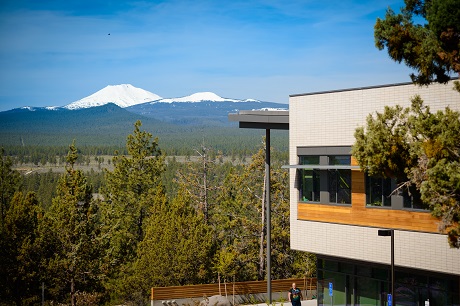Economic Study Reveals COCC's Extensive Impact
Study Reveals COCC’s Extensive, Positive Impact on Oregon Economy
As Oregon looks to a long-term economic rebound in the era of COVID-19, a recently
released statewide study reveals just how essential Central Oregon Community College
(COCC) is to the regional economy.
The study, commissioned by the Oregon Community College Association and conducted
by Boise-based Economic Modeling Systems International (EMSI), analyzed COCC’s impact
on the economy while also measuring benefits generated by stakeholder investments
— from students, taxpayers and society.
EMSI found that the annual activities of COCC and its students support one out of
every 35 jobs in Crook, Deschutes and Jefferson counties. Expressed in terms of number
of jobs, that translates to 4,166 jobs per year in the three counties. COCC’s annual
economic impact on Central Oregon, factoring in the full influence of employees, students,
alumni and expenditures, added nearly $300 million in income in 2018-19 — some 2.5%
of the total gross regional product, or more than the region’s entire transportation
and warehousing industry combined.
The average associate degree graduate from COCC working in Oregon will see an increase
in earnings of $8,000 each year compared to someone with only a high school diploma.
An estimated 92% of students remain in Central Oregon after finishing their studies
at COCC. EMSI estimated that the net impact of COCC’s former students currently employed
in the regional workforce amounted to $219.4 million in added annual income.
Students and Central Oregon are not the only ones who benefit from COCC’s activities.
The EMSI study noted that since education is statistically associated with a variety
of lifestyle changes, COCC generates social improvements that reduce the demand for
government-funded services in Oregon, saving the state’s taxpayers an estimated $4.2
million per year. COCC will also contribute an estimated $12.4 million of public and
private sector savings to the state related to reduced crime, lower welfare and unemployment,
and increased health and well-being across the state. For every dollar of public money
invested in COCC, taxpayers will receive $2 in return over the course of students’
working lives.
COCC employed 530 full-time and part-time faculty and staff in 2018-19, with payroll
amounting to $46.2 million. The college spent another $18.7 million on day-to-day
expenses related to facilities, supplies and professional services. Overall, the report
calculated that the net impact of the college’s operations spending has infused $57.4
million of income into the regional economy.
“Central Oregon Community College is an intrinsic part of our region, and this study
confirms the many ways that we contribute to the well-being and economic vitality
of our state,” said Dr. Laurie Chesley, COCC’s president. “The success of our students
and the college’s activities in Central Oregon play a significant role in the strength
of Oregon’s livelihood, particularly now as we strive to recover from the coronavirus.
COCC is proud to be a generative source for higher education, workforce development
and economic growth.”
Two years after the data was collected for EMSI’s study, COCC’s tuition and fees remain
some of the lowest among Oregon community colleges. An in-district student taking
a full course load (12 credits) will pay $1,509 per term in 2020-21 (COCC is on the
quarter system).
“We’re one of the most affordable options for higher education in Oregon,” said Tyler
Hayes, COCC’s director of admissions and records. “It’s very gratifying to see how
far a student’s investment in their community college education will take them, and
how the success of one COCC student will impact the lives and livelihoods of many
other Central Oregonians.”
For more information, contact Jenn Kovitz, director of marketing and public relations,
at jkovitz@cocc.edu or 206-227-9991.
View the EMSI report’s executive summary.

